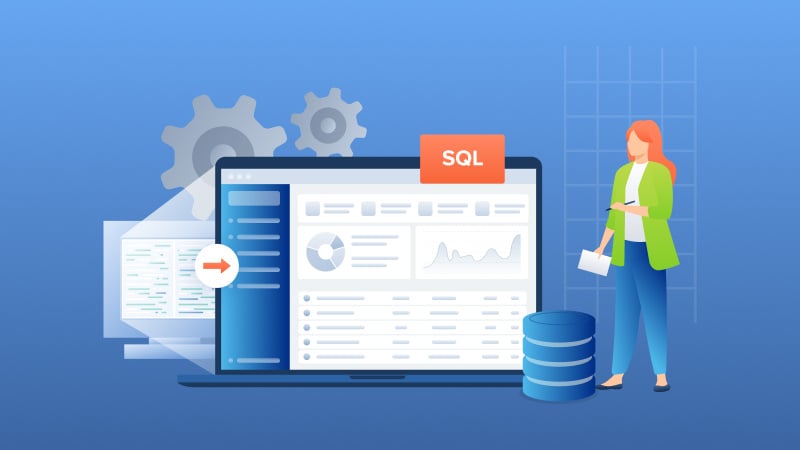Why Migrate from Btrieve to PostgreSQL and other Relational Databases?
Introduction Many independent software vendors (ISV) and corporate users still rely on applications that use a category of database collective called...
8 min read
 Mertech
:
May 24, 2024 5:26:00 AM
Mertech
:
May 24, 2024 5:26:00 AM

This post has been co-authored with Riaz Merchant, President and CEO at Mertech.
Cloud migration is a major shift for businesses aiming to harness the power of Software as a Service (SaaS), Infrastructure as a Service (IaaS), and Platform as a Service (PaaS).
That comes as no surprise since the Cloud enables greater IT efficiency and operational agility.
Take, for instance, Netflix, which completed its cloud migration in 2016. This allowed the company to drastically improve its service scalability and reliability, catering to millions of users worldwide without skipping a beat.
However, the path to the Cloud is fraught with challenges.
From daunting security and compliance cloud migration risks, reported by 56% of CIOs, to the pitfalls of inadequate planning and process optimization, the journey is anything but straightforward.
In this article, we'll explore the nuanced cloud migration challenges and shed light on the strategies you can use to overcome them.
In 2024, the number of organizations adopting cloud solutions is a staggering 94%.
At its core, this rapid shift towards the Cloud is driven by the undeniable allure of scaling IT needs on the fly, without the hefty upfront investment in physical infrastructure. These cloud migration benefits are crucial in today's fast-paced market, where adapting quickly can mean the difference between leading the pack and lagging behind.
Moreover, companies are finding that by moving to the Cloud, they can streamline operations, enhance collaboration, and boost innovation. The Cloud offers a playground for experimenting with new ideas, leveraging advanced analytics, and even employing AI, all without the burden of managing complex hardware setups.

It's this combination of cloud migration cost benefits, operational flexibility, and the capacity for innovation that's convincing an increasing number of businesses to embrace the Cloud.
But despite the numerous benefits, there are some challenges you should be aware of before moving to the Cloud.
Let's delve into the most common data migration to cloud challenges faced during cloud migration:
The transition from traditional, Windows-centric development to the multifaceted demands of cloud computing can be daunting for traditional developers as they might not have the skills to:
Solution: For larger enterprises, the solution may seem straightforward: hire additional developers or invest in retraining the current workforce to bridge this gap.
However, if you have a small to mid-sized business, you might face a more challenging task, having to make do with limited resources. In this case, you should focus on strategic planning and prioritization.
Overall, you should aim to identify critical areas for cloud development and focus on upskilling employees in these domains. You can also invest in targeted training programs and workshops to equip existing staff with the necessary cloud competencies.
This is a major challenge, especially for companies deeply rooted in desktop-based software.
The problem?
You will have to bring your loyal customer base to the Cloud while also opening doors for new users to explore your legacy desktop offerings.
The shift towards the Cloud has intensified global competition, prompting vendors to innovate with cost-effective, subscription-based models to attract and retain customers.
For instance, the CRM software market has evolved from exclusive, high-cost solutions to accessible services like Zoho CRM's free web-based offering, with upgrades starting at a mere $12 per user per month.
Solution: Make it your mission to distinguish your cloud offerings and simultaneously encourage new customers to discover the value in your desktop software. This balancing act is crucial for staying relevant and thriving in a cloud-centric world.
The cost of cloud migration is not just about the initial investment – it's about smartly managing your resources to avoid unexpected expenses down the line.
The truth is, while the Cloud promises efficiency and scalability, without meticulous planning and management, costs can balloon, leaving you grappling with budget overruns.
Solution: Embrace strategic planning and incremental migration. Break down the migration into phases, which not only makes the financial burden more manageable but also allows for corrections along the way. Also, consider a hybrid cloud migration approach, which offers the flexibility to scale up or down based on demand, potentially optimizing costs.
If you're jumping into cloud migration, security and compliance might be keeping you up at night, and rightly so. With the digital landscape more complex than ever, the fear of data breaches, cloud outages and compliance failure is real.
But don't panic just yet, as tackling cloud migration security risks is manageable with the right approach.
Solution: First, you should encrypt data both in transit and at rest to create a robust barrier against unauthorized access and other cloud migration security challenges. Secondly, partner with your cloud provider to ensure compliance with industry regulations. They've been down this road and have the map to navigate through the compliance jungle.
Venturing into cloud migration brings with it the cautionary tale of vendor lock-in. It's the scenario where you find your business tightly intertwined with a cloud provider's ecosystem, making the thought of switching services not just daunting but also costly.
Imagine diving deep into AWS's app modernization unique offerings only to realize later that Google Cloud or another provider better suits your evolving needs. Suddenly, the transition seems like an uphill battle since you rely heavily on specific tools and services.
Solution: Embrace a hybrid or multi-cloud strategy. This approach offers the flexibility to distribute your resources across different environments, reducing dependency on a single vendor. It's about safeguarding your business's agility and ensuring your cloud infrastructure can adapt seamlessly to future changes, all while keeping a keen eye on optimizing costs and enhancing efficiency.
Another on-premise to cloud migration challenge you'll encounter is the sheer size and complexity of your data.
It's easy to underestimate this giant, thinking you can lift and shift your legacy systems without a hitch. Yet, this path can lead to unexpected downtime, functionality losses, and, inevitably, customer dissatisfaction and productivity setbacks.
Solution: Start with a comprehensive assessment of your current setup to pinpoint compatibility issues and dependencies. You should also draw up a detailed migration roadmap that will make your leap to the Cloud both calculated and secure. Additionally, aim for a cloud provider that aligns with your unique requirements to ensure your migration is as smooth as possible.
Unfortunately, cloud migration is not as simple as "copy-pasting" your current system into the Cloud.
That makes compatibility issues quite common technical challenges in cloud migration. They stem from the fact that your legacy systems may not fit in smoothly with the sleek, new cloud environment.
So, what can you do to solve this?
Solution: If you opt for a phased cloud migration strategy, you will be able to first move the applications that require no modifications for cloud compatibility. Next, you can adjust your virtual network to ensure seamless communication with your on-premises setup. Finally, consider re-architecting or retiring those stubborn applications that just won't fit.
This approach offers a practical roadmap, ensuring a smoother transition to the Cloud without sacrificing your operational integrity.
Facing adoption resistance when shifting to the Cloud?
You're not alone.
Many organizations fear losing control over familiar processes and data. Additionally, telling your team that everything is about to change is daunting.
Solution: It's all about embracing change with open arms and a clear plan. Begin by getting everyone on board with a comprehensive change management strategy.
Engage your team with transparent communication, highlight the benefits, and provide ample training on the new cloud tools and processes.
Remember, involvement and education are key. By addressing concerns directly and showcasing the positive impact of cloud adoption, you'll pave the way for a smoother transition, ensuring everyone feels confident and ready to embrace the new cloud-centric way of working.

Overcoming cloud migration challenges might seem overwhelming, but with a strategic approach, it's entirely achievable. Here are a few cloud migration best practices to keep in mind:
Migrating to the Cloud involves aligning various components for seamless integration. That's where APIs come in.
API-driven development ensures all elements are designed from the outset to work together harmoniously. This enables:
Whether you acknowledge it or not, your company is now competing globally. To keep up, you must offer something unique via the Cloud and entice new customers to invest in the desktop-based software that got you started in the first place.
If you're not sure where to start and how to navigate the complex cloud migration process, Mertech is here to help. As a proud Microsoft Gold Competency in Cloud Platform holder, we are an experienced cloud migration service provider, ready to support you throughout every step of the journey.
Are you ready to migrate to the Cloud with our guidance?

Introduction Many independent software vendors (ISV) and corporate users still rely on applications that use a category of database collective called...

COBOL applications are the foundation of numerous essential business functions, especially within the banking, insurance, and government sectors....

Imagine breaking free from the constraints of old, monolithic systems and embracing the agility and innovation of cloud-based solutions.